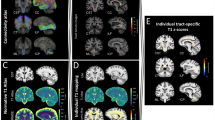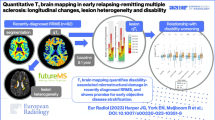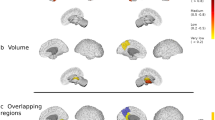Abstract.
Magnetic resonance (MR) techniques are of value in following the pathological process of multiple sclerosis in vivo. They are widely applied to monitor the disease natural history and its modification by treatment. However, serial studies of lesion measures have yielded generally disappointing correlations with the development of clinical disability. A potential explanation for this is the presence of abnormalities, beyond the visible lesions, in the normal appearing white matter (NAWM) and grey matter (NAGM). Quantitative structural MR techniques, including measures of magnetisation transfer, diffusion, relaxation times and spectroscopic metabolite concentrations, reveal that there are abnormalities in NAWM and NAGM. These are present from clinical onset and become more pronounced with clinical progression, increasing disability and increasing lesion load. Furthermore, functional MRI (fMRI) studies of motor and visual paradigms has identified a range of responses suggesting that cortical plasticity exists; such modified responses are seen in the earliest stages of disease and in the absence of visible lesions, but are more pronounced with disease progression and increasing lesion load and abnormality in the NAWM. Limited reproducibility and sensitivity to change can pose methodological limitations for MR studies of NAWM and NAGM, especially when follow up intervals are relatively short. Whilst existing quantitative MR measures from normal appearing tissues provide valuable information to understand the natural history and monitor treatment effects in MS, none of them fully or even predominantly accounts for the patient’s functional state nor can be relied on as a definitive surrogate measure of treatment effect. Better resolution of the abnormalities is needed especially in grey matter where pathological foci are known to be abundant. Studies correlating structural MR and fMRI parameters with measures of function in well defined anatomical pathways should further elucidate the pathogenic role of abnormality in the normal appearing tissues. In future, new imaging modalities are needed that provide a more specific measure of histopathological and cellular aspects of the disease process in vivo.
Similar content being viewed by others
Author information
Authors and Affiliations
Corresponding author
Rights and permissions
About this article
Cite this article
Miller, D.H., Thompson, A.J. & Filippi, M. Magnetic resonance studies of abnormalities in the normal appearing white matter and grey matter in multiple sclerosis. J Neurol 250, 1407–1419 (2003). https://doi.org/10.1007/s00415-003-0243-9
Received:
Revised:
Accepted:
Issue Date:
DOI: https://doi.org/10.1007/s00415-003-0243-9




